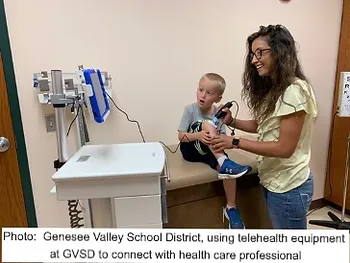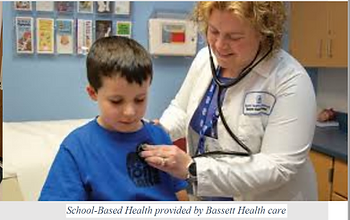Over the past few decades, a number of studies have revealed the corrosive impacts that insufficient access to preventative and primary healthcare – due to health insurance limitations, financial burdens, and reduced access to high-quality care – may have on a child’s long-term outcomes across social, economic, and educational indicators (Brindis, 2016; Gregg et al., 2019). These adverse outcomes due to obstacles disproportionately impacts rural regions. Evidence shows, for example, that compared to urban hospitals, rural hospitals are more likely to be in counties with an elderly and poor population. Furthermore, due to financial troubles, hospitals in rural regions have fewer advances in infrastructure relative to their urban counterparts. (Wishner, Solleveid, Rudowitz, Paradise, and Antonisse, 2016). Research has shown that SBHCs are effective in expanding access to healthcare and delivering preventive care, thus, it is crucial to ensure they are expanded – particularly in rural regions (Keeton, Soleimanpour & Brindis, 2012).
On the topic of access, Dr. Chris Kjolhede noted:
Increasingly in the last 25 years since I’ve been here, private practice in rural areas has just gone away. There used to be family practice docs that we used to be pediatricians in a lot of communities. It’s gone away. They all are now members of big healthcare systems, whether it’s, you know, UHS United Health Services, whether it’s Mohawk Valley plan, whether it’s or Mohawk Valley Health Plan. But there’s still a paucity of care available. You can look at the numbers and those statistics are out there that show you the per capita or per population pediatrician or family practice doc and rural areas are way underserved, way underserved.
SBHCs and RSA’s Network
There was widely expressed interest in SBHC support during a survey conducted by the Rural Schools Association (RSA) in January 2020 on the topic of mental health. For example, out of 109 completed surveys (including superintendents, mental health support staff, principals, and special education coordinators – among other positions), on the topic of suicide prevention, 82% respondents expressed concern over a “lack of community service providers,” while 56% of respondents noted a “geographic spread that makes it difficult to reach all who need it”. It seems that SBHCs, as well as mental health satellite offices, hold promise to increase access to services for a large portion of the community.
In this map, prepared by the Rural Health Information Hub, the darkest blue shading denotes that a “whole county is in shortage” of professional Mental Health services.

By exploring the Rural Health Information Hub: New York Chart Gallery, you’ll find access to maps with similar information for dental care access as well as primary medical care access in New York State, among other options. Shortage Designation Scoring Criteria can be found here and here


For further information on Clinic Access:
Ultimately, there is a lack of healthcare access in regions served by RSA, and establishment of SBHCs and mental health satellite offices in rural areas can help close this gap. Further guidance on how to actualize these practices are available next in Blog Post 3: So You Plan to Open an SBHC? Keys to Sustainability and Insights from Dr. Chris Kjolhede of Bassett Healthcare System.
References
Brindis, C. D. (2016). The “State of the State” of School-Based Health Centers. American Journal of Preventive Medicine, 51(1), 139–140. https://doi.org/10.1016/j.amepre.2016.03.004
Gregg, A., Kim, J., Tak, H. J., Wang, H., Tibbits, M., & Webhi, N. (2019). Money, Managed Care, and Medicaid Initiatives Matter: Patient-centered Medical Home Capacity in School-based Health Centers. Journal of Health Care for the Poor and Underserved, 30(1), 202–220. https://doi.org/10.1353/hpu.2019.0016
Keeton, V., Soleimanpour, S., & Brindis, C. D. (2012). School-Based Health Centers in an Era of Health Care Reform: Building on History. Current Problems in Pediatric and Adolescent Health Care, 42(6), 132–156. https://doi.org/10.1016/j.cppeds.2012.03.002
Wishner, J., Solleveld, P., Paradise, J., Jul 07, L. A. P., & 2016. (2016, July 7). A Look at Rural Hospital Closures and Implications for Access to Care: Three Case Studies – Issue Brief. KFF. https://www.kff.org/report-section/a-look-at-rural-hospital-closures-and-implications-for-access-to-care-three-case-studies-issue-brief/



